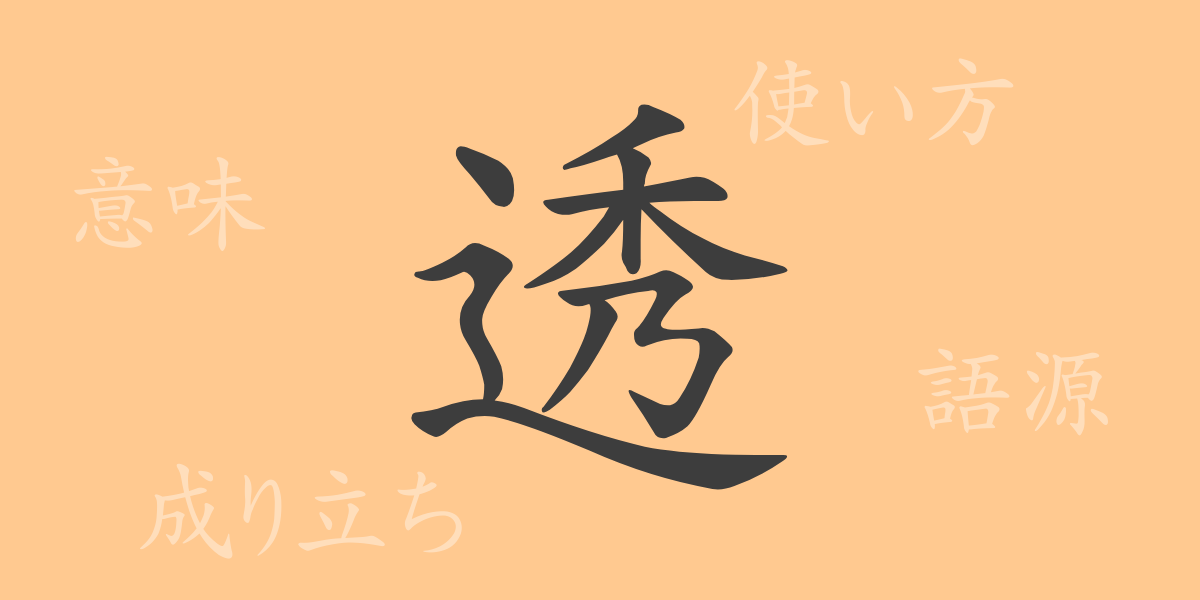In Japanese culture, Kanji not only reflects rich history but also deeply intertwines with daily life. Among these, ‘透 (とう)’ plays a profound role, delicately expressing sensations and being prevalently used in various contexts. This article delves into the character ‘透’, exploring its origins, meanings, applications, and the way it enriches our language.
Origins of ‘透 (とう)’
The Kanji ‘透’ dates back to ancient China’s oracle bone script. Originally depicted as light shining through a hole, it symbolized transparency and clarity. Over time, this character evolved to express not only physical transparency but also the concept of something being thorough or penetrating.
Meaning and Usage of ‘透 (とう)’
‘透’ encompasses meanings such as ‘transparent’, ‘to leak through’, and ‘to pass through’. It’s used not just in a physical sense but also metaphorically, like in expressions describing transparency in one’s feelings. The verbs ‘透かす (す.かす)’ and ‘透ける (す.ける)’, as well as adjectives like ‘透明 (とうめい)’ for transparency and ‘透視 (とうし)’ for perspective or insight, showcase its versatility.
Reading, Stroke Count, and Radical of ‘透 (とう)’
Understanding the Kanji ‘透’ includes knowing its readings, composition, and related elements.
- Readings: On’yomi ‘トウ’, Kun’yomi ‘す.く’, ‘す.かす’, ‘す.ける’
- Stroke Count: ‘透’ consists of 10 strokes.
- Radical: The radical ‘辵 (しんにょう)’ pertains to walking or movement, underlying the dynamic aspect of the character.
Phrases, Idioms, and Proverbs Using ‘透 (とう)’
Kanji ‘透’ is featured in numerous idioms, phrases, and proverbs, which illustrate the richness of Japanese expression.
- 透明 (とうめい): Something so clear that it’s nearly invisible.
- 透視図 (とうしず): In architecture, a drawing that shows internal features by making the outer walls transparent.
- 心が透く (こころがすく): Having a heart so clear that nothing is hidden.
- 透ける心地 (すけるここち): Feeling as though everything about one is completely transparent to others.
- 一筋縄では透かない (ひとすじなわではすかない): A situation where simple solutions are ineffective, indicating a complex problem.
Conclusion on ‘透 (とう)’
The Kanji ‘透’ captures a spectrum of nuances from physical transparency to psychological clarity, making it highly suitable for expressing delicate emotions and states. Its usage in Japanese not only enriches communication but also offers a deep insight into the subtleties of human expression. When you encounter ‘透’ in everyday life, remember the rich history and varied meanings it carries.

























